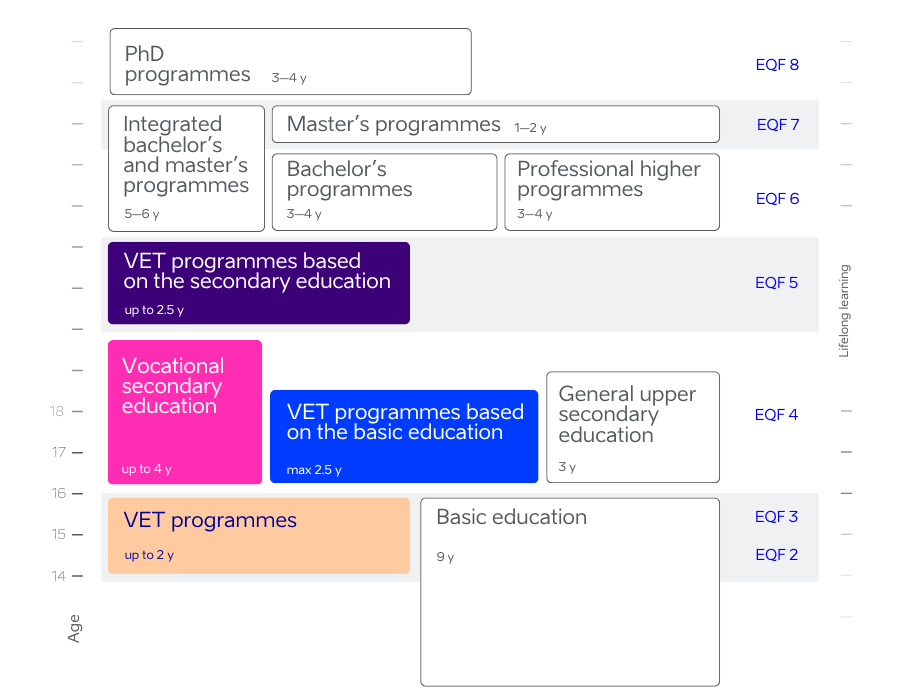Estonian vocational education is crafted to meet the labour market demands, placing a substantial emphasis on hands-on experience and flexibility.
In Estonia, vocational education closely aligns with the country’s labour market needs. Students gain practical experience, as practice in enterprises and practical work in school premises is a mandatory and important part of every curriculum
This practical focus is facilitated by the Estonian labour and skills forecasting system known as OSKA, which conducts surveys to forecast future skills and labour needs, ensuring that schools are well-equipped to meet these demands.
Over the last two decades, the vocational education system has undergone extensive reforms: modernizing curricula, optimizing educational networks, and creating large, diverse centres in each county, which offer a wide range of courses to various target groups.

Vocational schools in Estonia enjoy significant autonomy, similar to general education institutions. They offer multiple learning formats, such as school-based and workplace-based training. Programmes are designed around occupational standards, collaboration with local businesses is common, and the curriculas stand out for their strong integration with the labour market.
An interesting example of flexible learning opportunities in Estonian vocational education is the special curriculum for individuals uncertain of their career choice. This curriculum encompasses 30% basic studies focusing on career planning, alongside 70% elective modules tailored to individual interests, providing a structured yet adaptable learning pathway to assist in clarifying future educational or vocational directions.
Vocational education in Estonia is diverse, with technical fields, business, and ICT leading in popularity. Other well-attended areas include personal services, arts, and business administration, highlighting the range of opportunities for skill development and career advancement.
The curriculum’s volume is calculated in vocational education credit points, where one credit point equates to 26 hours of study. The standard yearly study volume is set at 60 credit points.
Levels of vocational education
Level 2: Open to individuals with unfinished basic education. The study volume ranges from 60 to 120 credit points, and at least 70% of the curriculum is dedicated to work practice and practical work.
Level 3: Also open to those with unfinished basic education, offering 60 to 120 credit points. At least 50% of the curriculum involves work practice and practical work.
Level 5: Requires secondary education for admission and is divided into:
Vocational training in Estonia is open to everyone, regardless of prior education. Some courses may have age or knowledge prerequisites. Tuition fees apply to certain categories of adult learners, including those who have completed free higher education within the previous 10 years or vocational training of the same or higher level within the previous 5 years. Students can check their eligibility for free education and any restrictions through SAIS (Student Admission Information System).
To graduate from a vocational programme in Estonia, students must meet all curriculum objectives, typically assessed through professional examination.
Exams can be taken at the school if it’s authorised to provide vocational qualifications; otherwise, they’re conducted at an authorised institution.
In the 2024/2025 academic year, vocational education was offered in 30 vocational training institutions and four state-owned applied higher education institutions that provide vocational training. Among the 30 vocational schools, there were:
A residence permit for study is required if:
Detailed information is available on the Police and Border Guard Board website.
Get our newsletter
Subscribe to the Education Estonia newsletter